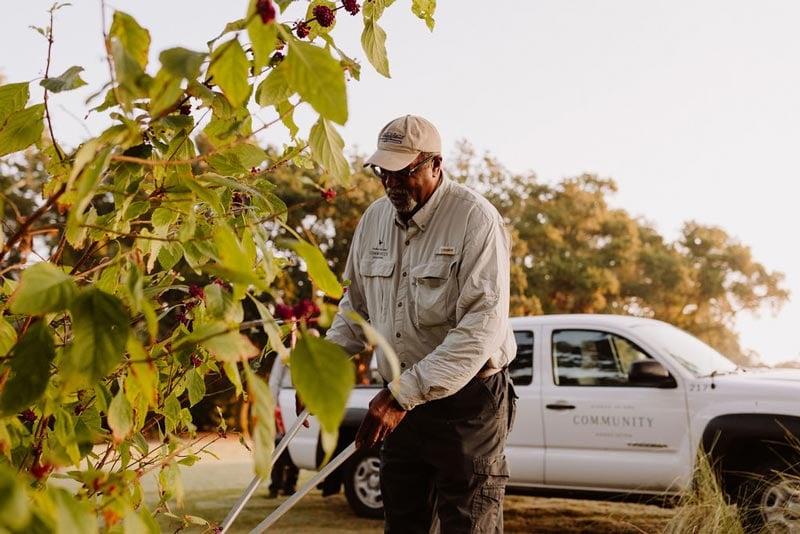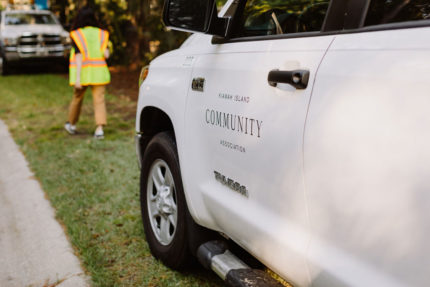Mar
13
2007
From The Blog
Remembering Kiawah… From Director of Sales to Partner
More than anyone else still involved with Kiawah, Pat McKinney was in at the outset of the island’s development. Rising quickly from an untested college recruit to marketing and sales manager, Pat has been a leader in the development of the island. Now, no longer involved in the day to day operations of the sales office, but still a principal in the managing partnership that is developing the island, Pat gives us an insight through his seasoned eyes of what the island has experienced.
Digest: Tell us about your early background.
Pat: I’m a southern boy by birth and rearing. I was born in Atlanta and went through public schools there. I received my college degree from Georgia State. Th e week following graduation I went to work selling real estate for Sea Pines Plantation on Hilton Head Island. I had sold books door to door in the summers to pay my way through college. A couple of older guys who had sold books with me had joined Sea Pines after graduating and offered me a job in sales. I accepted.
Digest: What were the circumstances leading Sea Pines and you to get involved in Kiawah?
Pat: In early 1974, the Kuwait Investment Company purchased Kiawah (from the Royal family) and hired Sea Pines as the development manager. My personal involvement began in 1975 when Frank Brumley, who was Kiawah’s general manager, invited me to come for an interview. Previously Frank had been general manager of another Sea Pines project, Amelia Island. So at the age of 25, on my first visit to Charleston and Kiawah, I was offered the job of director of sales to head up the sales staff , and I took it. I went on to hire the initial sales staff of Hal Ravenel, Brad Munday, Gary Delaney, Huger Sinkler, and Jim Griffin. Sales began in April 1976, concurrent with the opening of the Kiawah Island Inn.
Digest: In those early years, things didn’t always go smoothly, did they? Tell us what you
did.
Pat: In 1979, shortly after the Kuwaitis brought in a new general manager and Frank Brumley left, I left also. I accepted a position as head of sales and marketing over at Wild Dunes. Kiawah continued to progress through the early 80s. By 1984 it became clear that the Kuwaitis were losing interest and there were cutbacks in development, golf rounds, and hotel occupancy. Th e island lost some of its luster during the 1984-1987 period.
Digest: And then when did you come back?
Pat: When we heard the Kuwaitis might sell, we formed a partnership to buy the island consisting of Frank Brumley, myself, and ultimately the Beach Company with the Darbys, the Ways and Longs. We closed on June 28, 1988 but I can tell you that between Christmas 1987 and June it was a very exciting time. The deal literally died on the table four dif erent times and had to be resuscitated, two of those occurring in the last two weeks of the eff ort. When we finished, we were exhausted but still exhilarated.
In the final days prior to closing, and the Kuwaitis were pretty well gone, we poured a little concrete pad at the front gate and told some of the island leaders what was going on. When you see the American flag raised at the front gate, we told them, you will know we closed the deal. Th at was indeed true. The first time we drove out from the lawyer’s office after closing and saw the American flag at the front gate was emotional. Th at was a special time and it happened to be the 4th of July weekend.
Digest: Name five people that come to mind when you hear the word “Kiawah.”
Pat: Frank Brumley for reasons I’ve already enumerated. Denny Royal, whose family sold the island to the Kuwaitis. Denny has always been a source of historical perspective and challenge. He’s never lost the spark or the dream he’s had for the island.
Rob Hull, now deceased, was an incredibly talented planner that worked for Sea Pines. He was assigned to do the original master plan and took us through the initial rezoning effort. A lot of what Kiawah is today in terms of that master plan has survived through changing economic times and changing legal times. Much of the credit for that goes to Rob’s foresight.
Mark Permar (see the September and October Digests for interviews with Mark) came to Kiawah in 1979 and has been a steady influence on the island. He’s what we call the “keeper of the flame,” our conscience. His importance cannot be overstated.
Tommy Cuthbert unfortunately passed away last year. As we were putting together the first golf course – Marsh Point [now Cougar Point] – we hired Tommy, at the age of 27 or 28, as the first head golf professional at Kiawah. There is nobody that I know that exhibited the grace and beauty as a person that Kiawah exhibits as a development more than Tommy. He was always a friend and inspiration to me.
Digest: What major events in Kiawah’s history come to mind?
Pat: The first one was April of 1976 when we had the grand opening of the Kiawah Island Inn. The second was the emotional property owner gathering we hosted following our purchase of the island in 1988. Next would have to be Hurricane Hugo in 1989 and the reopening of the island on Thanksgiving of that year following initial cleanup. The next major event was tied to Hugo because just a couple of months before Hugo hit, Kiawah had been selected by the PGA of America as the site for the 1991 Ryder Cup. Because of that, members of our management team including myself, Buddy [Darby], Leonard [Long], Charlie Way and others were all invited to the 1989 Ryder Cup, the one immediately preceding the 1991 event, as special guests of the British PGA. So we were all in England when Hurricane Hugo hit. To be in England and watching on TV the devastation in Charleston, and fighting our way back home and to the island, was quite a time. The storm was a shock but we just rolled up our sleeves and did what we needed to do to put the island back together again.
Digest: When did you sell off the amenities to Landmark? [The resort amenities were subsequently sold to current owner Kiawah Island Golf Resort.]
Pat: That was March 31, 1989, about six months before Hugo. Part of our business plan from day one when we purchased Kiawah was not to be long-term owners of the resort component. We wanted to be master developer and community builders and not to be resort operators.
Digest: Since KRA purchased the island, isn’t it true that the fortunes of the island have always been on the rise?
Pat: There are a couple of reasons why Kiawah has been fairly steady in the pace of sales. Number one is the development plan itself. There has always been a steady hand at the trigger. That hand for the last 10 years has belonged to Buddy Darby. Kiawah was not one where large chunks of development properties were sold off to other developers who might have all converged at one time with plans to sell, and when a slowdown hits everyone panics at once, causing sales to drop off dramatically. Kiawah has always been managed for the long-term and never for the short-term. As a result we never experienced overheated investor speculation that many other communities have. So, maybe our peaks were not as high as others, but certainly our lows were never as low. Kiawah owners have enjoyed very steady appreciation and very strong underpinning of values for many, many years.
Digest: What are you most proud of?
Pat: Kiawah as a long-term community of families, not just a development.
Digest: Thank you, Pat.

